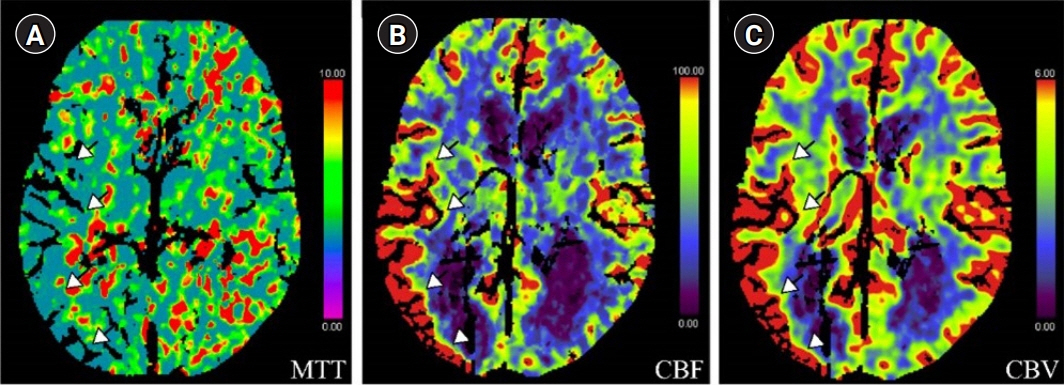J Neurocrit Care.
2022 Dec;15(2):136-140. 10.18700/jnc.220066.
Fixed and dilated pupils by pupillometer in lateralized periodic discharges: a case report in the neurocritical care unit
- Affiliations
-
- 1Department of Neurology, The Johns Hopkins Hospital, Baltimore, MD, USA
- 2Epilepsy Center, Department of Neurology, The Johns Hopkins Hospital, Baltimore, MD, USA
- 3Division of Neurocritical Care, Departments of Neurology, Anesthesiology and Critical Care Medicine, The Johns Hopkins Hospital, Baltimore, MD, USA
- KMID: 2538772
- DOI: http://doi.org/10.18700/jnc.220066
Abstract
- Background
Fixed and dilated pupils (FDPs) have become synonymous with devastating neurological damage and brainstem injury commonly associated with mass effect and herniation. Infrequently, changes in pupillary light response have been described with seizures; however, the loss of pupillary response with documented Neurological Pupil index has not been well established in patients with seizures.
Case Report
We present a case report describing a middle-aged female patient with focal status epilepticus with intermittent FDPs. An abnormal pupillary response occurred with right hemispheric lateralized periodic discharges and resolution with anti-seizure medication escalation. To our knowledge, this is the first description of objective documentation of reversible FDP as a possible clinical correlate of lateralized periodic discharges.
Conclusion
The use of handheld automated pupillometry in conjunction with electroencephalogram (EEG) has provided the therapeutic direction. Further research is warranted to fully describe the mechanistic underpinnings of these observations.
Figure
Reference
-
1. Gowers W. A manual of diseases of the nervous system. London: Churchill;1893.2. Marshman LA, Polkey CE, Penney CC. Unilateral fixed dilation of the pupil as false-localizing sign with intracranial hemorrhage: case report and literature review. Neurosurgery. 2001; 49:1251–5.
Article3. Jammes JL. Fixed dilated pupils in petit mal attacks. Neuroophthalmology. 1980; 1:155–9.
Article4. Hirsch LJ, Fong MW, Leitinger M, LaRoche SM, Beniczky S, Abend NS, et al. American clinical neurophysiology society's standardized critical care EEG terminology: 2021 version. J Clin Neurophysiol. 2021; 38:1–29.
Article5. Gugger JJ, Llinas RH, Kaplan PW. The role of CT perfusion in the evaluation of seizures, the post-ictal state, and status epilepticus. Epilepsy Res. 2020; 159:106256.
Article6. Williamson PD, Thadani VM, French JA, Darcey TM, Mattson RH, Spencer SS, et al. Medial temporal lobe epilepsy: videotape analysis of objective clinical seizure characteristics. Epilepsia. 1998; 39:1182–8.
Article7. Zee DS, Griffin J, Price DL. Unilateral pupillary dilatation during adversive seizures. Arch Neurol. 1974; 30:403–5.
Article8. Gadoth N, Margalith D, Bechar M. Unilateral pupillary dilatation during focal seizures. J Neurol. 1981; 225:227–30.
Article9. Jampel RS. Convergence, divergence, pupillary reactions and accommodation of the eyes from faradic stimulation of the macaque brain. J Comp Neurol. 1960; 115:371–99.
Article10. Chen JW, Gombart ZJ, Rogers S, Gardiner SK, Cecil S, Bullock RM. Pupillary reactivity as an early indicator of increased intracranial pressure: the introduction of the Neurological Pupil index. Surg Neurol Int. 2011; 2:82.
Article11. Osman M, Stutzman SE, Atem F, Olson D, Hicks AD, Ortega-Perez S, et al. Correlation of objective pupillometry to midline shift in acute stroke patients. J Stroke Cerebrovasc Dis. 2019; 28:1902–10.
Article12. Phillips SS, Mueller CM, Nogueira RG, Khalifa YM. A systematic review assessing the current state of automated pupillometry in the NeuroICU. Neurocrit Care. 2019; 31:142–61.13. Mullaguri N, Katyal N, Sarwal A, Beary JM, George P, Karthikeyan N, et al. Pitfall in pupillometry: exaggerated ciliospinal reflex in a patient in barbiturate coma mimicking a nonreactive pupil. Cureus. 2017; 9:e2004.
Article14. Godau J, Bierwirth C, Rösche J, Bösel J. Quantitative infrared pupillometry in nonconvulsive status epilepticus. Neurocrit Care. 2021; 35:113–20.
Article15. Husari KS, Johnson EL. Periodic discharges: how to approach, when to treat. J Clin Neurophysiol. 2020; 37:411–21.
Article
- Full Text Links
- Actions
-
Cited
- CITED
-
- Close
- Share
- Similar articles
-
- Generalized periodic discharges with triphasic morphology
- Deceased donor liver transplantation for post-hepatectomy liver failure with fixed pupils
- Periodic lateralized epileptiform discharges(PLEDs) with partial seizures after alcohol withdrawal
- A Study on the Clinical Significance of Periodic Lateralized Epileptiform Discharges and Relation to Brain Imaging Study in Children
- A Case Report of Congenital Fixed Dilated Pupils Due to ACTA2 Gene Mutation: Multisystemic Smooth Muscle Dysfunction Syndrome



